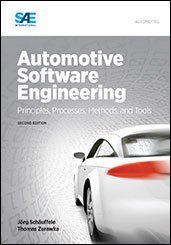Journal Article
1-D+1-D PEM Fuel Cell Stack Model for Advanced Hardware-in-the-Loop Applications
2015-09-01
2015-01-1779
As part of a system model, a PEM fuel cell stack model is presented for functional tests and pre-calibration of control units on hardware-in-the-loop (HiL) test benches. From the basic idea to couple a 1-D membrane model with a spatially distributed abstraction of the gas channel, a real-time capable 1-D+1-D PEM FC stack model is constructed. Fundament for the HiL usage is an explicit formulation of the commonly implicit model equations. With that, not only calculation time can be reduced, but also model accuracy is preserved. A validation using test bench data emphasizes the accuracy of the model. Finally, a runtime and eigenvalue analysis of the stack model proves the real-time capability.

